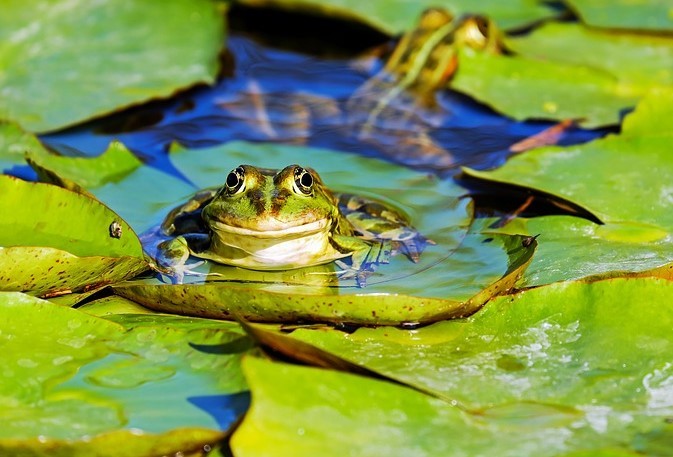UK Gardeners urged to set up Ponds
Gardeners in the UK are being encouraged to set up ponds, simple pools, or bog gardens because sightings of our native amphibians have dramatically decreased.
Over the past 30 years, toad numbers have fallen alarmingly. Data studies from various volunteer patrols set up to help toads cross our roads during the breeding season suggest that numbers have dropped by more than two thirds, whilst their froggy counterparts are also in worrying decline. This devastating downward trend is thought to be due mainly to the loss of garden ponds, but also changes in farming practices causing habitat loss and fragmentation, continual urban sprawl, and an increase in road deaths as traffic levels have increased. Milder winters can also have a adverse impact on hibernating toads.
According to a study published in the journal Public Library of Science ONE, south-east England has seen the worst decline in toads, and whilst those in Wales, the south-west and western England have declined, they have been fairly stable for the past decade. Central and northern areas of England, and most of Scotland have experienced considerable drops. Eastern England has suffered severe declines in previous decades, and although this has been followed by a minor recovery, the numbers have not been significant enough to reverse overall falling numbers. It goes without saying that our native amphibians are an important part of our ecosystem. They are valuable natural pest controllers, feeding on various insects, slugs, and snails, and they in turn provide food for mammals such as otters.
The RSPB (who have undertaken various garden wildlife surveys) are urging people to take measures to help our amphibian populations, and there are many simple ways in which we can make our outdoor spaces wildlife friendly. Amphibians rely on water sources to survive, but also inhabit nearby regions of long damp grass, shrubbery, and log/stone piles - areas which not only help them find food and evade predators, but which also help to keep them cool during the summer months.
Creating a small wildlife pond in the garden can make all the difference. Even modest water containers such as troughs or plastic bowls/pots housing aquatic plants can be of benefit, as can bog gardens. We just need to remember to add stones or branches around the edge of any pools to help these treasured creatures in and out. Paving around the perimeter of ponds can prove a barrier to amphibians, as it can get blisteringly hot during warm summer days, so wherever possible, create a small passage of vegetation to areas of sanctuary such as long, damp grass or cool log/stone piles. Unfortunately, most fish are voracious predators of frogspawn and tadpoles/newt larvae, so it is best not to introduce fish to the wildlife pond. If you wish to keep fish as well, you could create a larger pond with a sectioned off nursery area within that the fish cannot get to (i.e. an area filled with dense planting), and where the amphibians can reproduce much more safely. Two closely adjacent ponds, one deeper and housing ornamental fish, and one smaller shallower pool with gently sloping sides that is vacant of fish can also work just as well and the divide can be strategically hidden by plants, which will also help the amphibians to come and go.
Providing basic ponds and linking the surrounding environment, thus preventing habitat fragmentation, is likely to be vital if we are to reverse this decline in our amphibian species. As most gardens are relatively small, it is unlikely that particularly large complexes of ponds will be created in a single garden. However, your garden pond may form part of a complex with your neighbour's garden ponds, and in rural areas, it may form part of a complex of ponds in the surrounding countryside. Encouraging your neighbours to manage part (or all) of their gardens for wildlife, in particular by creating a small pond, could prove central in creating larger swathes of amphibian-friendly habitat.
If you have any questions about setting up a pond of any type, please do not hesitate to ask a member of staff for advice.




